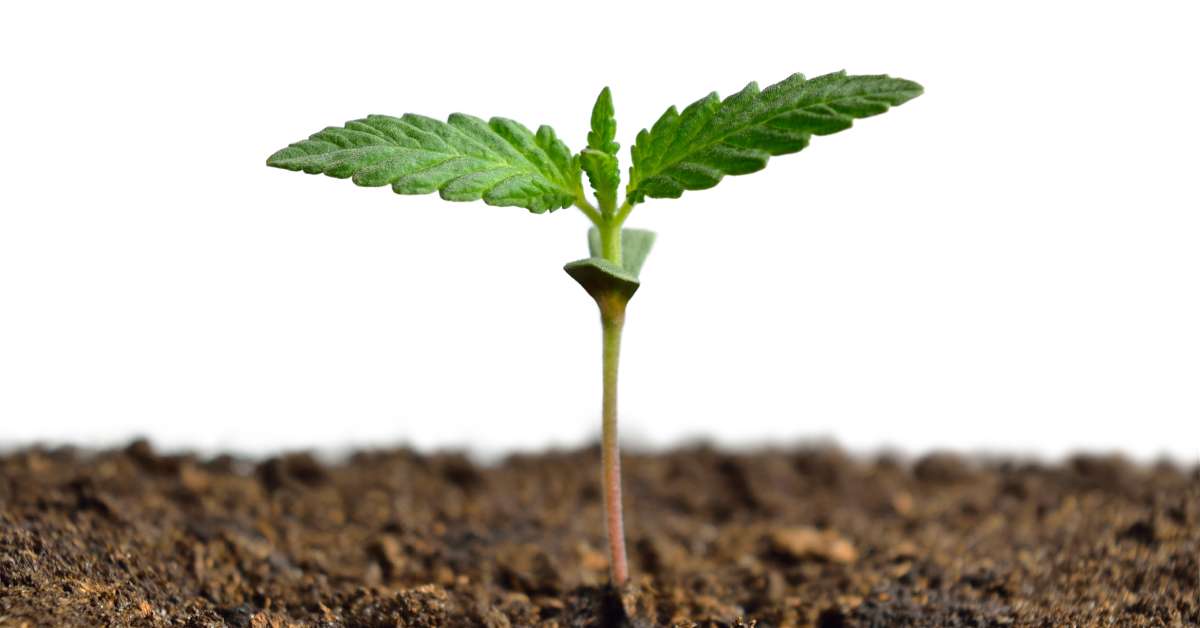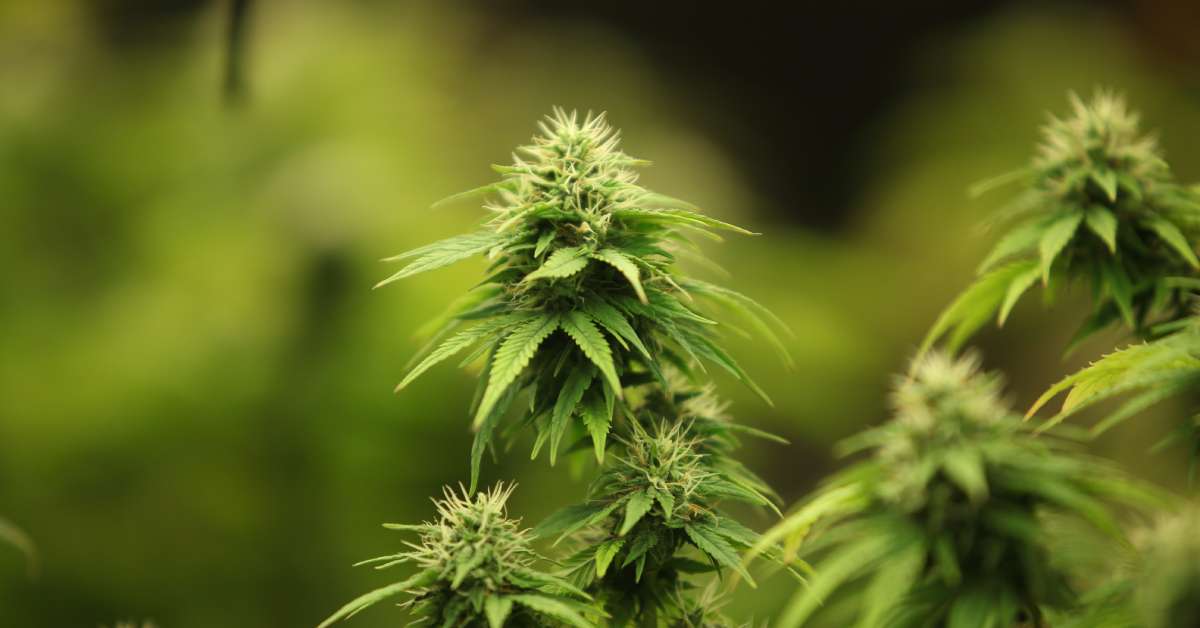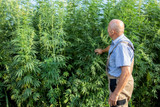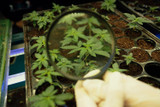What Are the Different Phases of Cannabis Growth?
Each stage of a cannabis plant’s life cycle, from germination to harvest, requires specific care and attention. Familiarizing yourself with the stages helps you tailor growth practices to meet the plant’s needs every step of the way. Here’s a comprehensive guide to the different phases of cannabis growth with tips to achieve a successful harvest.
1. Germination
Germination is the beginning of your cannabis plant’s life cycle. It is the moment when a seed awakens from dormancy and begins to sprout, forming the roots and shoots that will become a flourishing plant.
Germination Methods
There are several ways to encourage seeds to sprout. Each method is effective, but it’s up to the grower to decide which approach they prefer.
The Paper Towel Method
Place seeds between damp paper towels and store them in a warm, dark place until they sprout. Once they develop taproots, carefully transfer them to a growing medium.
Direct Soil Germination
Another common approach is direct soil germination, where seeds are planted directly into the growing medium. It mimics the natural process of germination and can reduce transplant shock since the seedlings establish roots in their final location from the start. To use this method, plant the seeds about half an inch deep in moist soil and keep them in a warm, humid environment.
Water Germination
Water germination is fast and efficient. Place the seeds in a glass of water and keep them in a warm, dark area. Within a few days, the seeds should crack open and begin to sprout.
Growing Conditions
A strong start in the germination phase leads to healthy plants with higher yields. Here are some environmental elements that will ensure the best conditions for growth.
Temperature and Humidity
Cannabis seeds thrive in warm, moist environments where they can quickly absorb water and break open. Typically, a temperature range of 70–85°F is ideal for germination. Too much or too little heat and moisture can hinder the process.
Airflow
Seeds require oxygen to metabolize stored energy and grow. Ensuring good airflow helps prevent mold and other issues that can arise from excessive humidity.

2. Seedling
The seedling stage follows germination and is when a cannabis plant begins to develop its first true leaves and establish a root system. The first few weeks of these seedlings’ existence set the foundation for the rest of their growth.
Growing Conditions
Cannabis seedlings are delicate and extremely sensitive to their environment. Factors like light, water, and airflow play a pivotal role in determining the plants’ future health.
Lighting
Lighting is one of the most critical factors for cannabis seedlings. They require about 18 hours of light daily.
LED grow lights are often recommended as they provide the necessary light spectrum without generating excessive heat. You can set the lights up on a schedule to consistently provide the perfect balance of light.
Watering
Overwatering is a common mistake with cannabis seedlings. These young plants need a moist environment, not a drenched one. Keep the soil damp by using a spray bottle to mist the soil and regulate moisture levels.
Airflow
Good air circulation is vital for preventing mold and mildew, which can devastate young plants. Using small fans to create a gentle breeze can strengthen the seedlings’ stems. This mimics natural conditions, encouraging sturdier growth and better overall health.
3. Vegetative
The vegetative stage is when cannabis plants focus solely on growing leaves, stems, and roots. It lasts anywhere from three to 16 weeks.
Cannabis plants exhibit lush, vibrant green foliage and sturdy stems. They grow rapidly, with broad, fan-like leaves forming in abundance to capture as much light as possible for photosynthesis.
Growing Conditions
Neglecting the vegetative stage can lead to weak plants that struggle to flower and produce quality buds. Here’s how to set up a proper growing environment.
Lighting
Plants during this phase require long hours of light, typically 18–24 hours a day. This extended light period encourages vigorous growth. Use LEDs to provide the full spectrum of light necessary for photosynthesis.
Temperature and Humidity
Like the germination period, the vegetative stage demands temperatures between 70 and 85°F. Maintaining humidity levels around 40–70 percent helps support healthy leaf development and prevents issues like mold and mildew.
Fertilizer Treatments
Of all the different phases of cannabis growth, the vegetative stage is the ideal time to start adding fertilizer to the crop. Providing macronutrients like nitrogen, phosphorus, and potassium, along with micronutrients, will establish a strong foundation. The plants will resist pests and diseases and better support the weight of future buds.
The Fish Head Farms soil conditioner is an organic solution that increases nutrient uptake, flavors, and plant yield. It’s also suitable for many growing mediums, from hydroponics to soil. With a versatile fertilizer for vegetative cannabis plants, you instantly escalate the odds of success.
Pruning
Many gardeners choose to prune their plants to encourage growth during the vegetative stage. Removing lower leaves and small branches that receive little light helps direct the plant’s energy toward the main growth areas. This results in stronger, healthier plants with better airflow, reducing the risk of mold and pests.

4. Pre-Flowering
The pre-flowering phase, also known as the transition phase, is the period when cannabis plants prepare to enter full bloom. Plants shift focus from vegetative growth to the development of flowers. This stage is short, lasting for only one to two weeks.
An evident sign of the phase is the appearance of pre-flowers at the nodes, where the branches meet the main stem. These pre-flowers are small, hair-like structures that will eventually evolve into full-blown buds.
Growing Conditions
Monitoring your plants closely during this phase allows for timely intervention. Here are a couple of environmental factors to alter to ensure that the plants flower in the next phase.
Lighting
The first step to accommodate pre-flowering plants is to alter the lighting schedule. Shifting from an 18–24-hour light cycle to a 12-hour light cycle triggers the flowering process. This change in light duration signals the plants to start producing flowers.
Nutrients
While nitrogen remains essential for plant growth, phosphorus and potassium become more important as the cannabis matures. These additional nutrients are crucial to support the processes of budding and flowering.
5. Flowering
The flowering stage closely resembles the pre-flowering phase with the same light cycle, humidity, and airflow requirements. Remember to maintain a temperature between 65 and 80°F. With careful cultivation during this eight- to 11-week period, you’ll have healthy plants ready for harvesting.
Monitor Pests and Diseases
As plants develop dense buds, these areas can become hotspots for pest infestations and mold growth. Look for signs like discolored leaves, spots, or webbing, which can indicate the presence of pests such as spider mites, aphids, or fungus gnats.
When it comes to diseases, powdery mildew and bud rot are common adversaries. To combat these, use oscillating fans for adequate airflow and maintain humidity levels of 40–50 percent.
6. Harvest
The final phase is harvest! It’s the moment when your hard work finally pays off.
Examine the crops for clear signs that they’re ready to harvest, like trichomes changing from a milky white to an amber color, or the pistils on the buds darkening and curling inward. These visual cues indicate peak ripeness, balancing maximum cannabinoid and terpene content.
Recent Posts
-
Battling Tough Pests: Effective Pest Control Tactics
Dealing with pests is a regular challenge for cannabis growers. From aphids to spider mites, these t …Dec 10th 2025 -
Selecting and Setting Up Grow Tents for Year-Round Growth
For anyone thinking about growing cannabis year-round, having the right setup is key to achieving gr …Dec 10th 2025 -
Advanced Propagation Techniques for Seasoned Growers
For seasoned cannabis growers, mastering the art of propagation unlocks the full potential of your g …Dec 5th 2025




